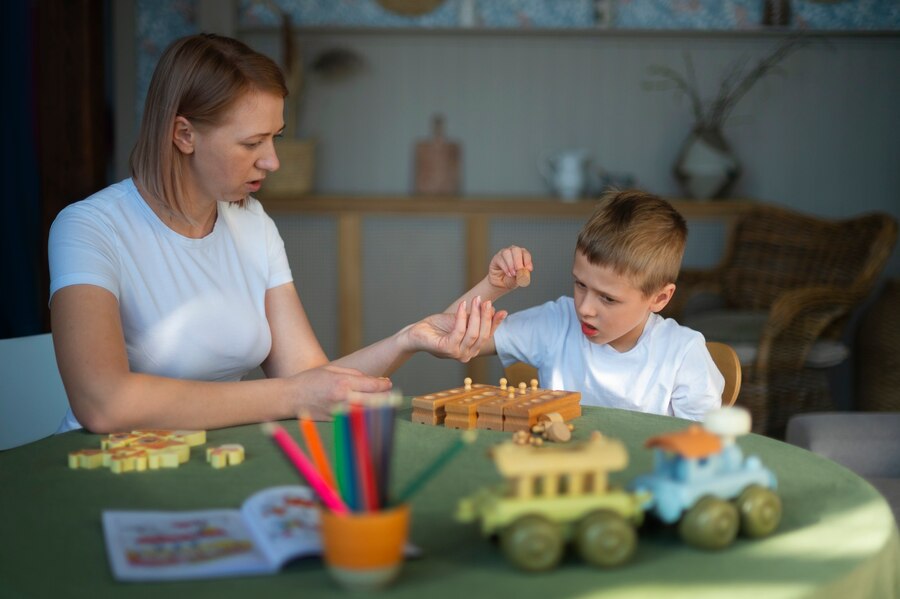Routine is essential for all children and is especially important for autistic children. Predictable and structured settings help the child with an autism spectrum disorder feel secure, reduce anxiety, and support general development. In this blog, we will discuss routines for children with autism and offer useful, practical tips from brands like Kairos ABA Therapy for creating and maintaining them appropriately.
Why Routine Is Essential for Children with Autism
Children with autism always find trouble with changes to their environment and their relationships and communication. A strict routine serves as a source of stability and control for these children. Some important reasons why routine is important in children with autism are:
-
Reduces Anxiety and Stress
Unpredictability is one of the major issues children with autism have to deal with. Schedules or even their environment might sometimes change suddenly, which would bring anxiety, frustration, and even emotional meltdown. Having a routine will help them understand what to expect and ensure smooth transitions with reduced stress.
-
Enhances Learning and Development
Repetition of activities and routines helps a child memorize. Children with autism need frequent repetition to enhance and retain their learning of activities. They also need a constant daily routine in which they can learn communication skills, social interaction, and self-care.
-
Improves Emotional Regulation
Routine helps children with autism learn to control their emotions better. Knowing what will happen helps them feel more in control and less overwhelmed by uncertainty. Predictability minimizes behavioral challenges and improves the regulation of overall emotions.
-
Encourages Independence
A structured routine is one way children with autism learn to do things independently. For instance, an established morning routine that includes brushing teeth, dressing, and eating breakfast can help establish independence. Adding visual schedules and step-by-step instructions helps support them in completing these daily activities.
-
Strengthens Social Skills
Most children with autism experience difficulty in social relationships. A well-structured schedule allows them to prepare for situations involving social relationships and thus act appropriately. For instance, a child with a set playdate or scheduled group activities can gradually feel more comfortable and confident in social settings.
How to Create and Maintain a Routine for Children with Autism
A routine is not established overnight but rather with consistency, flexibility, and a deep understanding of the needs of a child. Some strategies for establishing and maintaining an effective routine include the following:
-
Start with a Visual Schedule
Information processing in children with autism would be best facilitated through pictorial support rather than verbal orders. A visual schedule of pictures, symbols, or written words will guide the child to comply with the daily schedule.
- Use a whiteboard, chart, or digital app to show the schedule.
- Show pictures of activities such as breakfast, brushing teeth, and playtime.
- Use checklists to promote independence.
-
Be Consistent but Flexible
While consistency is key, flexibility must accompany it. Change, especially when it’s unforeseen, may happen, so prepare your child for such occurrences.
- Use countdowns or timers to transition between activities easily.
- Give a warning before changing an existing schedule. For instance, “In five minutes, we will clean up and prepare for lunch.”
- Share social stories to explain that things may not always go as planned, such as moving to a new place or having a substitute teacher.
-
Establish Clear Morning and Bedtime Routines
A predictable morning routine sets the tone for the day, while a well-planned bedtime routine ensures easy relaxation and sleeps well. Here’s a morning routine example:
- Wake up at the same time daily.
- Brush teeth and wash face.
- Eat breakfast.
- Get dressed.
- Engage in a preferred activity before school.
Here’s a bedtime routine example:
- Turn off screens 1 hour before bed.
- Take a warm bath.
- Read a favorite book.
- Listen to calming music.
- Go to bed at the same time every night.
-
Incorporate Sensory-Friendly Activities
Many children with autism exhibit sensory sensitivities. Including sensory-friendly activities in the routine can help them regulate their emotions without overstimulating them.
- Provide a quiet space, soft lighting, and weighted blankets for relaxation time.
- Give movement breaks, such as jumping on a trampoline or stretching.
- Utilize sensory toys, such as fidget spinners or squishy balls, during transitions.
-
Use Positive Reinforcement
Children with autism respond well to positive reinforcement. Acknowledge and praise them when they follow the routine, as this encourages cooperation and builds confidence.
- Verbal Praise, for example, “Great job putting on your shoes!”.
- Give small rewards, stickers, or even extra playtime.
- Offer a favorite activity upon completing tasks, such as watching a short video to finish homework.
-
Prepare for Transitions and Unexpected Changes
Difficulty in transitions may occur in children with autism. Ease this process through the following:
- Use countdown timers or transition songs.
- Give a transition object, like a small toy they can carry around when transitioning between activities.
- Introduce new routines gradually and allow enough time for transitions.
-
Communicate with Teachers and Caregivers
Consistency should be established in various settings, such as at home, in school, or during therapy. Teachers, therapists, and other caregivers should collaborate closely to help make routines and strategies consistent.
- Share the daily schedule of your child with school staff.
- Address sensory preferences and triggers.
- Guarantee communication methods, such as using visual schedules and cue cards, across all environments.
-
Adapt the Routine as Your Child Grows
Children’s needs and interests change as they grow. Routines need to be adjusted gradually to accommodate new activities and responsibilities. For instance, when they develop self-care skills, let them dress themselves or prepare meals independently.
Final Thoughts
Routine is a tool for children with autism that can help them navigate life confidently and easily. It minimizes anxiety, enhances learning, and promotes independence. Visual scheduling, maintaining consistency, and using sensory-friendly activities are a few practices that can create an environment for the child to thrive.
While routines need to be consistent, it is just as important to gradually introduce flexibility and preparation for changes within a supportive environment. Thanks to patience, positive reinforcement, and teamwork between teachers and therapists, a structured yet adaptable daily routine can benefit children with autism.
By exploring and applying these strategies with the help of professionals like Kairos ABA Therapy, families can foster a protective environment that nurtures their children to feel safe, supported, and empowered to grow.





